I knew the place would have some vegan food: it was too hip not to — sparse and spare with an unpronounceable name: Scen, sometimes in all lower case. “Sen?” “Sken?” “Ahh”–upon reflection: “scen…as in scenery. If I’m cool enough to figure that out, I’m cool enough to go in.”

It turned out to be a Matthew Kenney restaurant and, as such, one-hundred percent vegan. My fellow diners, however, seated like me on concrete benches in the minimalistic space, were not vegan. One trio of men were actually discussing a recent trip to Africa where one of them had hunted big game. These folks would have been just as happy — happier, probably — if adding wild salmon or organic chicken to Scen’s hearty bowls was an option. In chatting with a few of them (those who hadn’t been recently murdering wildlife), I learned that they were not here because this place was vegan, but because it was a hot commodity, a restaurant getting buzz, a good spot for seeing someone with a famous name. Several diners had a secondary interest in eating healthfully, but for the most part, they were here because this place was hip, and Hipster is their foodstyle.
Have you ever thought that we all have a foodstyle, a means through which our dietary decisions support the way we see ourselves and the way we want others to see us? As vegans, we can be monstrously more effective in sharing our thoughts on compassionate, health-promoting, planet-preserving food choices if we do that with an understanding of the other person’s foodstyle.
Let’s lay out those that are prevalent in the United States:
- Hipster
- Healthster
- Foodie
- Regular Joe/Regular Jane
- Traditionalist
- Naturalist
- Gourmet
Most people have a strong identification with one of these, and secondary/tertiary styles. As you read these descriptions, think of yourself and other people in your life and see where you fit.
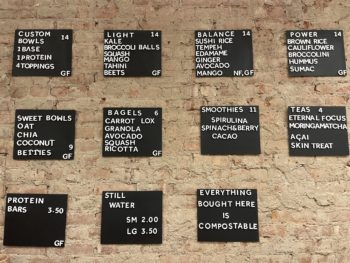
Hipsters, like the people I saw at Scen, use food to prove to themselves and others that they are up on trends, that they know the next craze, the next fashion, and the next social-climbing foodstuff before anyone else does. The Waldorf salad, created in 1893, was the cat’s meow through the 1920s. Spelling chic in the 1940s was another hotel-born dish, this one from the Ritz-Carlton: vichyssoise, a creamy, potato-leek soup, often served cold. Quiche was king in the 1970s, and avocado toast had a recent moment — which ended abruptly when it went on the menu at Dunkin’.
- When you’re talking with a hipster about veganism, emphasize its timeliness, the most noteworthy celebs to adopt it of late, and the futuristic angle: if we want a planet on which to continue to play, the only classy choice is vegan.
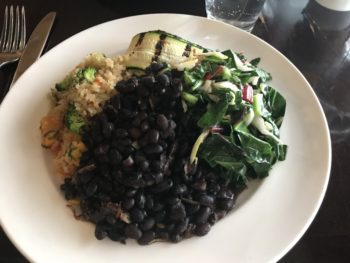
Healthsters, or health enthusiasts, know that good nutrition is essential to good health. They have a reputation for trying anything that promises increased vitality. These health-conscious eaters are likely practice health-promoting activities such as exercise and meditation, in addition to watching what they eat. Many make their healthy habits fun, discovering new superfoods and delighting in their energy and fitness. Others are willing to employ spartan methods, such as calorie restriction, to up their odds for robust longevity. A subgroup in this category is made up of people whose primary concern is keeping their weight down. Some of these make reasonable choices most of the time, while others risk being duped by fad diets or accepting as healthy substances that are not, i.e., diet soda and artificial sweetener.
- Someone with a healthster profile is often extremely open to a WFPB, raw food, macrobiotic or other plant-based regimen designed for health promotion. The obstacle we face with these folks is their prior beliefs. If a healthster is convinced about their paleo diet or eating for their blood type, they’re going to be hard to convert unless they notice that they’re falling short of their health goals on their current food plan. The best way to get the attention of a healthster is to be healthy. Obviously, even the best lifestyle can’t guarantee that, but generally speaking, if you’re a vegan who’s noticeably fit and who radiates an aura of wellbeing, omnivorous healthsters will want to know what you’re up to.
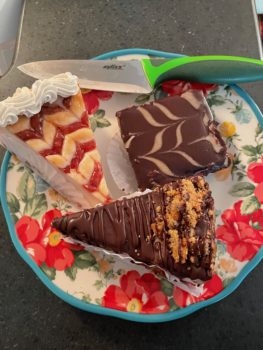
Foodies — the fancy term is gourmand — don’t just love food: they revere it. When they call someone “Chef” — no additional name required — it sounds a little like “Your Holiness.” These folks are responsible for the success of the Food Network, a thousand recipe blogs, and fellow foodies Rachel Ray, Jamie Oliver, and the late Anthony Bourdain. These are equal opportunity eaters: they love food from around the world, and they can wax poetic over a $300 prix fixe menu or a $3 discovery from a street vendor. They love restaurants, of course, but also retail purveyors of all kinds of foods, as well as shops that sell kitchen gadgets.
- To a foodie, doing without entire “food groups,” as it seems to them that vegans do, is like deleting half the devotions from a prayer book. To interest them in looking further into veganism calls for enthusiasm around the culinary arts that rival their own. Plant-based dishes are almost always more attractive than meat-based fare: play this up. Talk about great vegan restaurants and fabulous recipes. Gush about aquafaba. Have your foodie friends over a feast in which every course outshines the one before.
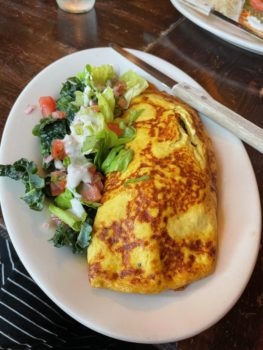
Regular Joe/Regular Jane eats a lot of the same foods they did growing up, taking comfort in the familiar. The worst thing they can say about a cuisine or a dish is that it’s “weird.” RJ/RJ is placated when the barista at the coffee bar asks if they want “regular” milk, nodding to the still prevailing sentiment, one that RJ/RJ is likely to agree with, that cow’s milk is normal, and maybe the other stuff isn’t. The Regular Joe/Jane foodstyle is the predominant one in America, and it is reflected in our country’s most popular dishes: burgers, fries, pizza, chicken tenders, ice cream. In addition, there are RJ/RJs who strive to make health-conscious choices and those who value home-cooked meals — just nothing weird. RJ/RJ’s tend to have a lot of brand loyalty. They’re the target market for slogans such as “With a name like Smucker’s, it’s got to be good,” and “Everybody doesn’t like something, but nobody doesn’t like Sarah Lee.”
- These people — and there are lot of them — are apt to see vegans as elitist, intrusive know-it-alls who want to eradicate everything they hold dear. Let the RJ/RJs in your world in on how many of the foods they already enjoy are vegan: peanut butter sandwiches, for instance, and Oreo cookies. Share with them, without too much “THIS IS VEGAN!” fanfare, veganized versions of dishes they already love — chili, lasagna, Mom’s meatloaf without the meat — or join them at BurgerKing for an Impossible Whopper.
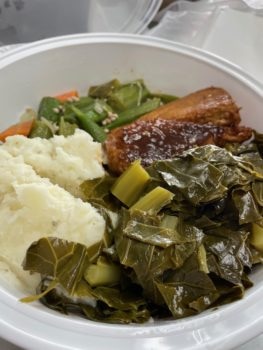
Traditionalists are invested in the foods of their heritage, the dishes and ingredients that characterize their family, ethnicity, culture, or religion. When a traditionalist looks at going vegan, they’re concerned about turning their back on people they love (usually a mother, grandmother, or both), or about somehow blaspheming ancestors who made it through very dark times eating some of the foods that traditionalists cherish today. Some traditionalists identify strongly with regional foods: Kansas City steak, Louisiana gumbo, New England clam chowder, Tex-Mex chili, Idaho potatoes, Buffalo wings. There is also a subgroup within the traditionalist category that sees an overarching New World food tradition, the culinary equivalent of the American songbook — think Ruth’s Chris, the Capital Grille, or at a lower price point, Applebee’s. (Note: Both certain Traditionalists and RJ/RJs can feel that their manner of eating is somehow divinely ordained. It’s “the American way,” or “the way we [family, culture, etc.] do it,” or “the way it’s always been.”)
- When your traditionalist is someone who believes that a meal isn’t a meal without a piece of flesh in the starring role, you’ll have to inspire by example; or look for some opening — a comment about global warming or high cholesterol — as your in. When dealing with family and cultural traditions, however, it’s curious to note that only a few cultures around the world prize animal products more than Americans do. Otherwise, global cuisines are largely plant-based. We can point this out when speaking with people about heritage dishes (this is most effective, of course, if we have the same heritage). Sharing food is a big one here, and making a traditional dish with vegan ingredients that’s even tastier than the original goes a long way to help people see that eating as a vegan might carry the traditions forward after all.
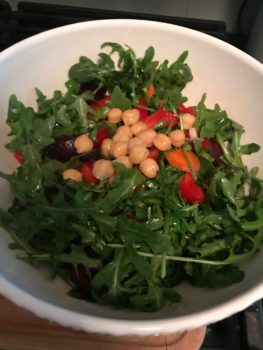
Naturalists are a fairly small group but you do run into them, in both vegetarian and meat-eating circles. If they can, they’ll grow most of their food, and perhaps forage for wild greens, edible flowers, and mushrooms. If they need to shop, it’s at the farmers’ market (or the farm itself). Naturalist omnivores are likely to hunt, and/or butcher the animals whose meat they consume; and their having backyard chickens is almost guaranteed. Unless they’re raw-food enthusiasts, they bake their own bread (and probably grind the flour). Preparing meals, and even condiments, from scratch is a highlight of the naturalist foodstyle.
- The challenge with a naturalist is that they’re apt to believe that all food provided by nature, animals and their secretions as well as plants, provide the cornucopia from which we are meant to dine. The only enemy, in their view, is the processed, the packaged, the commercial. We can connect with them in the places at which our interests intersect: shared experiences with gardening, spouting, trips to an organic orchard, and coming home to the smell of bread baking. A diet comprised of fresh fruits and vegetables, whole grains and beans, and nuts and seeds is pretty darned natural — a little foraged fungi thrown in and you just might win over your naturalist prospect.
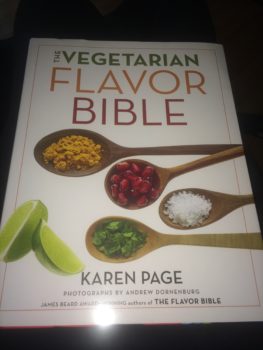
Gourmets (or epicureans) value quality food superbly presented. If its lineage is even a little bit French, some would give it extra credit. As important as the food itself is, the gourmet is looking for a total dining experience that includes ambience, elegance, and having the spoons in their proper places. Fine dining is a passion and a joy. In the contemporary world, most gourmets can indulge their preferred foodstyle to its full extent only on occasion, so they remind themselves of their gourmet identity with lovely table settings, good wine, or seeking out delightful finds at specialty shops: imported crackers, gentrified jams, an unusual chutney, or the gourmet cliche: caviar.
- With a little willingness and creativity, anyone with epicurean inclinations can veganize those. I remember an article years ago in Health Science, the magazine of the National Health Association. It was about calling on all the fabulous glassware, china, and cutlery, that had made for memorable dining and entertaining in the old days, to step into service in a new era of eating, and serving guests, exquisite foods from the plant kingdom. True, someone clinging to the classic French culinary ideal, replete with butter and cream, may have a harder time than someone else in warming to the idea of going vegan. Even so, if no one announces the plant-based status of the meal before the fact, its deliciousness can speak for itself. (There is, in fact, a French vegan restaurant in Greenwich Village, Delice and Sarrasin, that was in operation for two-and-a-half years as simply a French restaurant. They had coq au vin on the menu, and steak frites, all plant-sourced, and no one was the wiser.) You can help your gourmet friends in their vegan transition by sharing with them gourmet treasures that you’re aware of — Miyoko’s cheeses, for instance: the variety covered in black ash, or the one wrapped in a fig leaf. You can also create veganized gourmet experiences together, at home or when you travel.
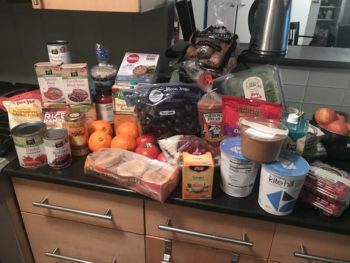
Think, too, about your own foodstyle. If you identify as vegan, that’s a conviction. If you see yourself as plant-based, that’s a commitment. Neither is a foodstyle. I submit that you make your vegan/plant-based choices within the parameters of your personal foodstyle.
Please share in the comments what you think your foodstyle is and how you moved away from animal foods, and perhaps processed foods, without abandoning your identity as a foodie or a traditionalist or whatever your foodstyle is. Or maybe in your move to veganism, you changed your footstyle as well as your ethical and nutritional choices. Perhaps you went from Regular Jane to Naturalist, or from Gourmet to Hipster. I’d love to know how you see these concepts. And whatever your foodstyle, bon apetit: may you thrive with those foods that cause no harm.

Victoria Moran is the author of 13 books, director of Main Street Vegan Academy, host of the Main Street Vegan Podcast, and cofounder of the Compassion Consortium. She discovered the concept of Foodstyles while dining at Matthew Kenney’s eatery, Scen, where bowls prevail, artfully crafted plant foods comprise the menu, and everything is so hip, even though it’s in NoMad, you’d think you were in Brooklyn. Follow Victoria on Instagram @VictoriaMoranAuthor and @MainStreetVegan, and on YouTube: VictoriaMoranNYC.


I think I was a Regular Jane who generally ate the foods I grew up with, that were familiar, easy to make, and comforting. After awakening to the ethics of my food choices…and then the health and planetary impacts…I shifted to being more of healthster, with components of “foodie” thrown in. I now enjoy making creative, delicious, and healthy vegan dishes…along with some yummy chocolate desserts here and there.
So much to digest here. “Healthster” is a new word for my vocabulary. May I suggest a subtitle to this article? “Vegan Chic”
Love this! I never thought of personal “foodstyles” but it’s so on point!
I find myself thinking of my friends, family, and clients and where they are in the foodstyle world;)
This is a great resource for meeting potential vegans/WFPB where they are at.
I think it’s safe to say that I have lived most of my adult life as Healthster and transitioned to a Vegan Healthster. early on. The Healthster foodstyle came with being in the fitness industry, becoming vegan for the animals made it easy for me to become and stay a Vegan Healthster…I’d go as far to say that 20+ years ago being vegan made it easier to be a Healthster…there wasn’t vegan mac n cheese etc back then 😉
Fantastic Blog !
This is very cool! I love this!
I never thought of personal “foodstyles” but it’s so on point!
I find myself thinking of my friends, family, and clients and where they are in the foodstyle world;)
This is a great resource for meeting potential vegans/WFPB where they are at.
I think it’s safe to say that I have lived most of my adult life as Healthster and transitioned to a Vegan Healthster. early on. The Healthster foodstyle came with being in the fitness industry, becoming vegan for the animals made it easy for me to become and stay a Vegan Healthster…I’d go as far to say that 20+ years ago being vegan made it easier to be a Healthster…there wasn’t vegan mac n cheese etc back then 😉
Fantastic Blog !
I love this so much! So interesting to consider Foodstyles. I think I’m half Foodie and half Healthster these days. Hard to recall pre-vegan but I think more Foodie then. Fun Blog!
Victoria, I really enjoyed this column. I don’t really pay attention to labels, especially as they pertain to foodstyles. It’s a new lingo for me. Yet, I could understand why it would be important to someone as there is so much emotion packed into what and how we eat. I, too, realize that I much prefer being addressed as whole foods plant exclusive to whole foods plant based. I definitely journeyed from Regular Jane to Healthster by way of ethical vegan. I transitioned from RJ to vegetarian after I read Diet for a New America and looked at my cat, my beautiful Honey Bunny, and immediately changed my foodstyle to no more animal flesh. The journey continued for another 2-3 years when the EV part of me took over and vegan it was. This said, the pleasure trap part of vegetarianism would lure me in especially during times of crisis or drama. In my 3rd decade of this lifestyle I found whole foods plant exclusive, Chef AJ’s way, SOFAS free, to bring me the calm, stable brain for which I am very grateful. It’s a process. Patience is helpful. Thank you so much for your beautifully written article as it has gently encouraged me to give real thought to the subject. 🙂
Love this Victoria. I am a healthster (always have been) with a heavy dose of Regular Jane thrown in the mix. I have loved veganizing childhood staples like lasagna and shepherds pie and in truth those dishes have been helpful in making my diet more accessible to friends and family when we entertain . I have some hipsters and foodies in my life so love the tips on how to approach them.
Mostly Healthster with a little Foodie and a little Gourmet thrown in. Before I was vegan, I didn’t care much about food. But going vegetarian, then vegan, was the start of a food adventure that’s lasted 26 years.